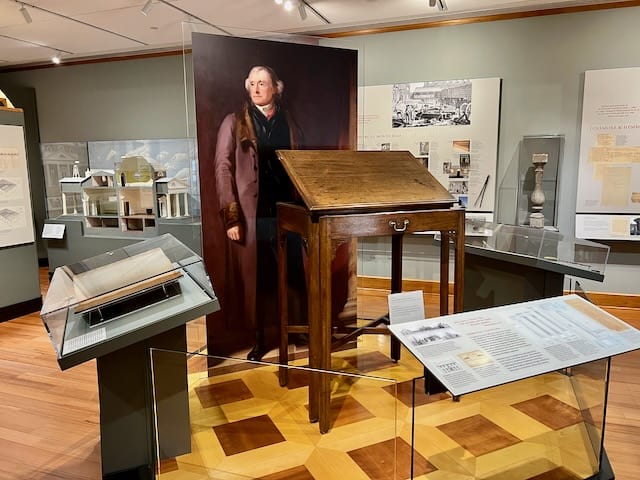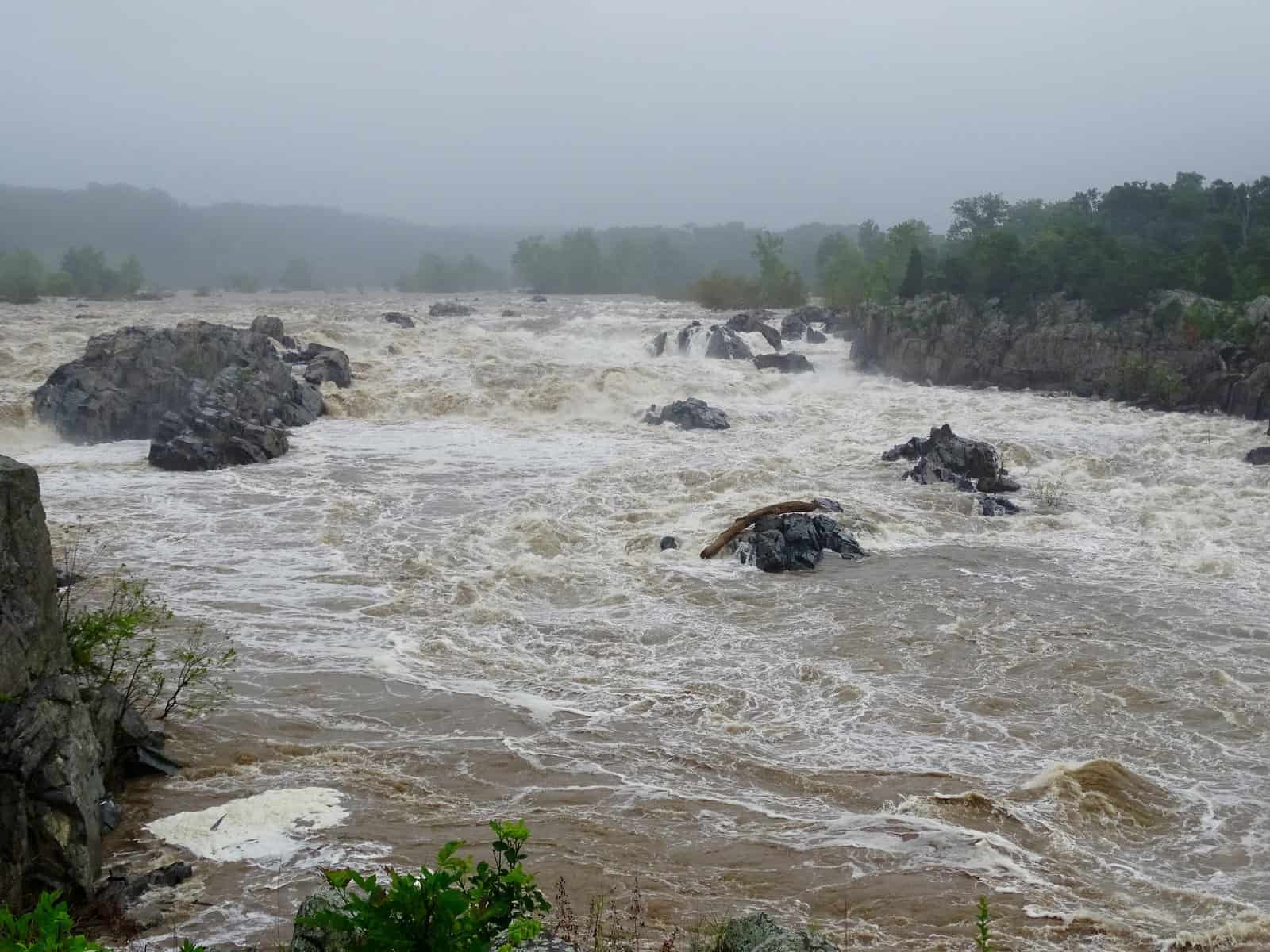10 Places to Explore at Thomas Jefferson’s Monticello in Charlottesville, VA
In addition to being America’s 3rd President (from 1801-1809) Thomas Jefferson is also known for prestigious roles include Governor of Virginia, writer of the Declaration of Independence, the first Secretary of State, the second Vice President, and the founder of the University of Virginia in Charlottesville, Virginia. Jefferson’s Monticello (pronounced “ch-ello” not “cell-o”) is Italian for “Little Mountain” and is celebrating it’s centennial anniversary of being open to the public since 1923. Over the past 100 years, the main house has been restored and the property has been expanded to include several museum exhibits, outdoor gardens and vineyards, a restaurant, expansive gift shop, and daily programs and events to engage the entire family.

Born in 1743 less than two miles from Monticello, Thomas Jefferson inherited over 3,000 acres of land from his father, Peter Jefferson, in 1769 and he started to build his own estate. A self taught architect, it took Jefferson 40 years to build, rebuild, and add to his Monticello estate, a working plantation in Central Virginia. The original home had only 8 rooms but was later expanded to a 21 room estate. Jefferson had up to 150 enslaved African American men, women, and children working on the property during his lifetime. Jefferson lived at Monticello from 1770 until his death on July 4, 1826, exactly 50 years after the Declaration of Independence was signed.
When Jefferson died, he owed the equivalent of close to four million dollars; several auctions were held to help pay off his debts. Jefferson’s only living heir, his daughter Martha Jefferson Randolph, sold the property to Uriah Levy, who became owner of the Monticello in 1830 and kept the estate in good standing until he sold it to the Thomas Jefferson Foundation in 1923, making 2023 the estate’s 100th birthday. Today, the estate has added several museum exhibits, activities for families, multiple dining locations, and the opportunity to learn more about an important era in America’s history.
Travel Tips:
Would you like to save this?
10 Places to Explore at Monticello:
- The Visitor Center: Start your exploration of Monticello in the Visitor Center with an eight minute introductory video, Thomas Jefferson’s World, about Jefferson and Monticello’s history. The Visitor Center also has a large gift shop, cafe, restrooms, and helpful staff.
- Tour the first floor of the Main House: Guided tours include stops at the visitor’s entrance, sitting room, bed chamber, parlor, dining room, and outdoor garden. We’ll have a scavenger hunt game for the tour coming in two weeks on the blog-check back!
- Peek into the lower level rooms of the South Wing, including the post-1809 kitchen, Cook’s Room, Smokehouse, and Dairy. Guests can explore these spaces on their own. Make sure to watch the audio-visual experience that shares the life of Sally Heming, told from the perspective of her son, Madison Hemings. **Not suited for young children due to the sensitive topic.
- Walk through the tunnel underneath the house that connects the South Wing to the North Wing. There are several cellar rooms for wine and beer. Look down into the round ice house, where ice formed in the winter was stored for the entire year! A reproduction of Jefferson’s 1802 horse drawn phaeton is stationed right next to the ice house, as well as one of three privies (toilet facilities).
- Kids will want to relax at the outdoor Mountaintop Activity Center next to the Farm Shop and complete an arts and crafts activity. **Note: The Center is open from June- early September and weekends in October.
- The vegetable gardens and path past the Storehouse for Iron, Joiner’s Shop Chimney and the path to the Contemplative Site for quiet reflection on Jefferson and the state of our country. The flower gardens are spread out throughout the property and bloom at different times during the year. Monticello also has two orchards and two vineyards, and at one time, Jefferson grew over 150 varieties of 30 types of fruit on the land.
- Jefferson family Graveyard: Walking the .35 mile trail from the Main House down to the Jefferson Gravesite and then another .25 mile back down to the Visitor Center. (Guests can take the shuttle in both directions, but it is easier to walk down and enjoy the beauty of the property.) The Burial Ground for Enslaved People is located at the beginning of the trail to Visitor Center
- The Smith Education Center: The two level indoor museum includes the second floor exhibit To Try All Things, with 200+ artifacts from the museum’s permanent collection that showcase Jefferson’s love of technology and science. The first floor has an exhibit showcasing a 1823 copy of the Declaration of Independence made by engraver William Stone, and the Making Monticello exhibit features architectural plans and scaled models for the estate.
- The Discovery Room in the Smith Woodland Pavilion is another great spot for kids. Just steps from the Visitor Center, the space has a book nook, building blocks table, and plenty of arts and crafts activities led by staff. Make sure kids stamp their own copy of the Declaration of Independence. Bonus: there is a restroom and changing station in the Discovery Room.
- Hike several trails around the property, in addition to the trail leading to the main house. Most trails are less than a mile and connect to one another- see the trail map here.
Looking for a game for the kids to play while touring Monticello? Check out this post. Looking for other presidential homes to explore? Check out our posts featuring James Monroe’s Highland, Washington’s Mount Vernon, and Andrew Jackson’s Hermitage. And follow along on our adventures on Instagram, Facebook, Pinterest, and Twitter.
Disclosure: Our family was given a media pass to explore Monticello. All opinions expressed are my own.


















































Wonderful descriptions and amazing pictures. We’re planning on visiting in September and this will give us a wonderful way to review everything before we go and look for all the special things you explained. Thanks so much.
Wow! So much history here. Thanks for sharing.
I’ve never heard of Thomas Jefferson’s Monticello in Charlottesville before reading this. It looks like a stunning place to visit. I’ll be saving all your recommendations for a future trip.
Thomas Jefferson’s Monticello looks like a great place to add to my Charlottesville itinerary. Thanks for sharing your detailed guide, it’s always great to know what to expect.
Love the pro tip that the activity center is only open seasonally! Always looking for historical spots that have some interactive component like the activity center and the scavenger hunts.
I have not visited this part of USA yet, but Thomas Jefferson’s Monticello looks like an interesting place to visit in Charlotteville. I love places like this with history to re-learn, old curios and photographs, plus a good souvenir shop and cafe too. 🙂